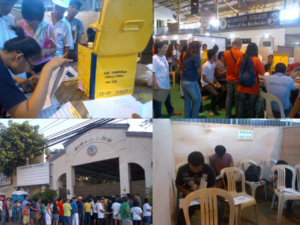The Philippines recovered somewhat from weak public spending in early 2011 through a P72-billion stimulus, but government agencies must still deal with internal bottlenecks to translate plans into projects that generate jobs and improve Filipinos’ welfare, the World Bank said in a report.
In 2011, weak government spending pulled down growth, with gross domestic production growing by just 3.7 percent, below the government’s short-term target of 5 to 6 percent. The aspirational target is to grow GDP by an average of 7 to 8 percent yearly from 2010 to 2016 to make a dent on poverty.
The World Bank noted the slowdown in disbursements in the first three quarters, partly attributed to measures to improve transparency and accountability in national government agencies. For example, a thorough review of the bidding process for infrastructure projects was conducted by the Department of Public Works and Highways to improve cost-efficiency and transparency of procurement and budget execution.
Yet more work needs to be done and the World Bank said the government must keep clearing up inefficiencies in more agencies to see money well spent in projects that have a high impact on people’s development.
Contrary to frequent allegations that slow budget execution is due to the Department of Budget and Management’s slowness or refusal to release agency budgets, the report cited case studies showing that more often than not, the agencies themselves had bottlenecks in their own spending processes. That is, they have low capacity to absorb and use their budget efficiently.
The World Bank said the reasons behind the so-called low absorptive capacity included: frequent and unpredictable changes in agency policy regarding program implementation modality; cumbersome procurement process exacerbated by lack of forward planning; and complexity of interagency coordination, which at times is worsened by avoidable internal administrative errors in some cases.
For example, the World Bank said, hiring new teachers required authorization from three agencies: the DBM, the Civil Service Commission and the Professional Regulatory Commission.
The government has started to deal with these issues but it will take some time before spending picks up given the reform gestation period, the World Bank said.
Public construction shrank by almost 30 percent despite efforts to revive infrastructure spending in the fourth quarter.
The decline was most pronounced in the second quarter, with a 51-percent drop in spending compared to the same period in 2010. Current expenditures such as personnel services, maintenance and other operating expenditures contracted by 8 percent in the first quarter but slowly recovered in the next three quarters, growing by 5 percent for the whole of 2011.
Compared to programmed expenditures, disbursement was lower by 9 percent in 2011. Total disbursement at P1.558 trillion was only 91 percent of programmed expenditure for the year and 82 percent of total available appropriations. The deterioration in spending performance was most pronounced in infrastructure and other capital expenditures where only 66 percent of the full-year programmed expenditure was disbursed as of December.


